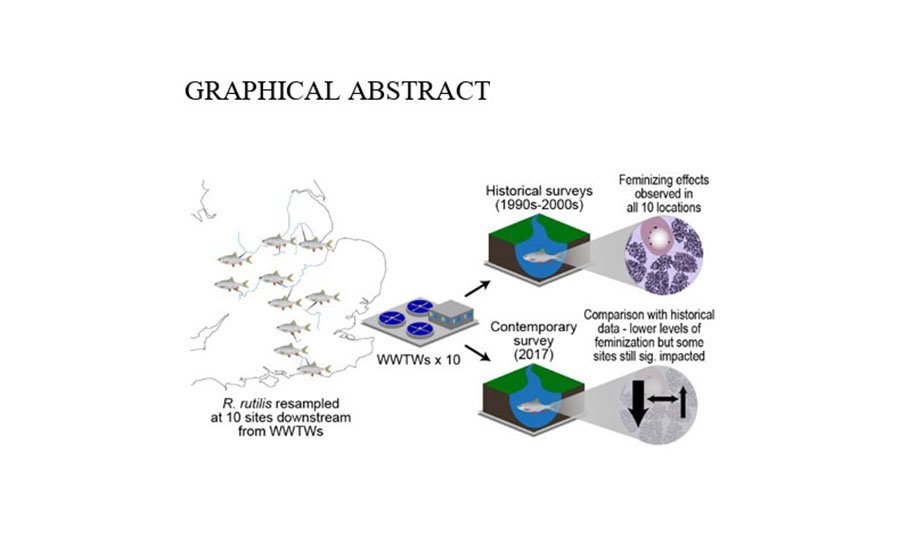Wild roach that swim in English rivers are exposed to lower levels of hormone-altering chemicals than 20 years ago, yet current amounts are concerning, scientists say.
Endocrine disruption, which can cause male fish to produce female proteins and develop eggs in their testes, has been known about since the 1980s.
Treated sewage pumped into rivers carries a cocktail of chemicals related to the female sex hormone, oestrogen, from ones the body makes naturally to those in everyday things like plastics, shampoos and sunscreens. When wild fish absorb these through their gills, some become ‘intersex’ and develop a mix of biological sex characteristics.
Despite sewage treatment works upgrades and tighter restrictions, a study in Environmental Science and Technology reveals fish hormone disruption is still a worry.
“Although the severity of male fish showing female characteristics is now reduced at many of the re-visited sites, endocrine-disrupting chemicals are still impacting wild fish living downstream of waste water treatment works in England,” said Brunel University London’s Dr Alice Baynes.
Roach, a hardy, small silvery fish found in most UK rivers near where people live, plus much of Europe, has been studied in the UK for the past 40 years.
In the 90s and early 2000s, ecotoxicologists measured endocrine disruption in fish at more than 50 UK sites up and downstream of waste water treatment works. Some of the most damaged fish were found in rivers around Leeds, where there were high concentrations of alkylphenols, detergents used in textile making. The EU’s Water Framework Directive heavily regulates alkylphenols. The team also analysed endocrine disruption drivers such as oestrogens both men and women excrete naturally and pharmaceutical oestrogens used in contraceptives and HRT. Over the past two decades, while not forced by regulation, many sewage treatment works have modernised, and the Environment Agency commissioned the research to find out if endocrine disruption is still an issue.

In the latest study, a team from Brunel University London and University of Exeter revisited 10 of the original river sites. Overall, waste water treatment works discharge less oestrogen into rivers. But at 60% of the re-visited sites they found male roaches were intersex, with egg cells in their testes. This is a permanent change that worsens with constant exposure and affects breeding. And 90% of sites males had concentrations of female egg proteins, a sensitive biomarker for estrogen exposure, above natural levels.
Different water treatment technologies are better at cleaning oestrogens from waste water. The activated sludge process, which bubbles oxygen through tanks of sewage, is more efficient than trickling filters, which pass sewage over stones. And adding third treatments like sand filters and reed beds remove oven more. Great Billing works on the River Nene switched from trickling filter to activated sludge process in about 2001. It had, in the latest study, fewer intersex roach and lower levels of female egg proteins in the male fish. The river Arun had the most sex-reversed fish at 10.7 %. These sex-reversed fish have completely male or female genitals, but are genetically the opposite sex. Meanwhile, the River Lea and River Nene showed none. Then the River Arun upstream had the highest count, 40%, of intersex male fish. The Trent, Lea, Witham, Eye, Avon, Arun and Bourne were the other rivers studied.
“What was interesting,” said Dr Baynes, “is that in the past, you’d be able to predict which sites would have higher levels, mainly on how big the sewage works was. If it was a normal sewage works, you’d expect lots of endocrine disruption downstream. Now it seems some of those bigger sewage works that have had more investment and have done more and are now actually cleaner than some of the works in smaller towns and villages. So some of these smaller sewage works still need a lot of improvement to provide healthy rivers.”